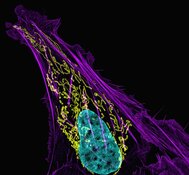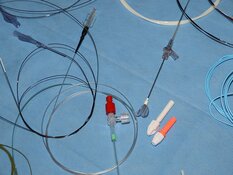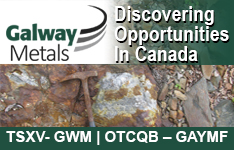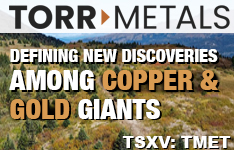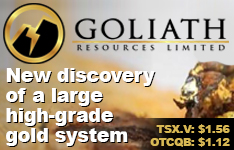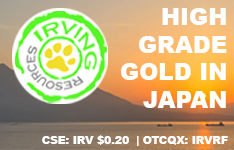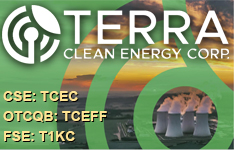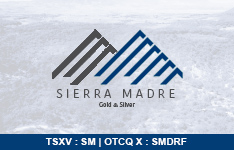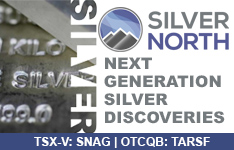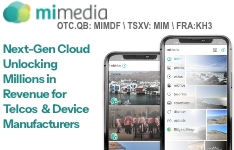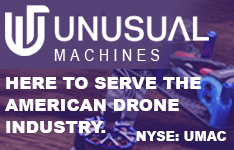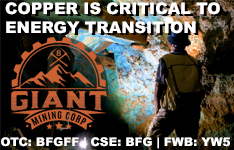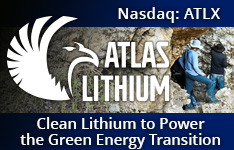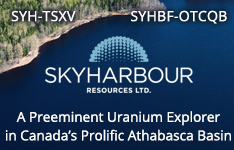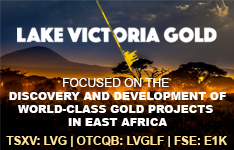Rakovina Therapeutics Inc. (RKV:TSX.V) announced that new preclinical data from its ATR inhibitor program will be presented at the AACR-NCI-EORTC International Conference on Molecular Targets and Cancer Therapeutics, taking place October 22–26, 2025, at the Hynes Convention Center in Boston, Massachusetts. The company's data will be shared during Poster Session C on Saturday, October 25, from 12:30 to 4:00 PM ET.
The ATR inhibitor program was developed in collaboration with Variational AI using its Enki generative AI platform. These efforts focused on identifying compounds that selectively target the ATR kinase, a key component of the DNA damage response (DDR) system. ATR plays a vital role in detecting DNA damage and initiating repair pathways, especially in cancer cells that rely on this mechanism due to defective DNA repair systems.
Rakovina synthesized and tested lead candidates for potency, selectivity, metabolic stability, and the ability to penetrate the blood-brain barrier, a common limitation for current DDR-targeting therapies. According to the company, the presented compounds demonstrated CNS penetrance, a feature that could broaden their therapeutic potential to include brain tumors and metastases.
"The data to be presented at AACR-NCI-EORTC reflects the continued progress of our AI-driven drug discovery pipeline and the importance of our collaboration with Variational AI," said Professor Mads Daugaard, President and Chief Scientific Officer of Rakovina Therapeutics.
The AACR-NCI-EORTC conference is co-hosted by the American Association for Cancer Research, the National Cancer Institute, and the European Organisation for Research and Treatment of Cancer. It draws thousands of participants from academia, regulatory agencies, and the pharmaceutical industry to examine advances in molecular targeting and cancer drug development.
AI and Oncology Converge in Drug Development
Artificial intelligence has become an increasingly integral part of oncology research, offering new efficiencies in the design, validation, and delivery of cancer therapies. According to a September 26 article in The American Journal of Managed Care, AI's ability to analyze genomic, imaging, and clinical datasets has allowed researchers to tailor treatment approaches based on individual tumor biology. These capabilities are central to the field of precision oncology, which emphasizes personalized care through data-driven insights.
A key concern raised by experts has been the need for transparency in AI algorithms. As noted by Davey Daniel, MD, clinicians and patients may hesitate to adopt AI systems without clear explanations of how therapeutic decisions are reached. This has prompted a push toward explainable AI frameworks that allow medical professionals to audit and verify AI-generated recommendations using clinical evidence.
Reporting from BioSpace described 2025 as a turning point in the application of AI to trial design and outcome prediction. These systems have supported faster screening of drug candidates and improved therapeutic targeting, particularly in areas such as DNA damage response. Research published in Frontiers in Oncology further explored how transparent, interpretable AI models are being used to guide treatment planning, particularly in radiation oncology.
Meanwhile, a large-scale study published on October 13 by Mass General Brigham introduced a new blood test capable of detecting HPV-related head and neck cancers up to ten years before symptoms appear. Known as HPV-DeepSeek, the test achieved 99% sensitivity and specificity by analyzing fragments of viral DNA in the bloodstream. Study author Dr. Daniel Faden stated that early detection could enable more effective, less invasive treatments and improve long-term outcomes.
The oncology sector has also experienced mounting complexity in clinical trial design. As reported on October 15 by PharmaVoice, the average phase 3 trial now generates nearly six million data points. Kenneth Getz of Tufts CSDD noted that a significant portion of this information is considered non-essential, contributing to protocol amendments, participant burden, and delayed trial timelines. He emphasized the need for more efficient data collection practices to support faster drug development.
Expert Commentary Signals Strategic Potential in Rakovina's AI-Driven Oncology Platform
On August 22, Dr. Douglas Loe of Leede Financial Inc. highlighted Rakovina Therapeutics' strategy to enhance the tumor-targeting capabilities of its anticancer candidate kt3283. He reported that the company had signed a letter of intent with NanoPalm, a Saudi Arabia–based lipid nanoparticle innovator, to explore new drug delivery modalities. "It is no surprise that the firm consummated a letter of intent with one lipid nanoparticle innovator that has documented expertise in cancer drug delivery," he wrote, emphasizing that the collaboration aligned with Rakovina's ongoing efforts to improve the pharmacokinetics of its therapy.
According to Loe, kt3283 is a first-generation dual inhibitor of PARP (poly-ADP ribose polymerase) and HDAC (histone deacetylase), both of which are targets validated in existing U.S. Food and Drug Administration–approved cancer therapies. He noted that Rakovina aims to identify small molecules capable of inhibiting these targets simultaneously. Loe pointed to previously published pharmacokinetic data in Clinical Cancer Research, which demonstrated that kt3283 exhibited "enhanced" cytotoxicity in a mouse model of Ewing's sarcoma, a rare and aggressive pediatric bone cancer. The study showed kt3283 achieved stronger anti-tumor activity than either a representative PARP or HDAC inhibitor alone and at lower concentrations.
Loe further explained that Rakovina's pursuit of tumor-targeted formulations could involve conjugation of kt3283 to monoclonal antibodies or encapsulation within novel lipid nanoparticles. He described NanoPalm's work with supramolecular lipid structures, known as nanopalms, and stated that while little has been published on the company's AI-driven EnsaliX engine, the technology appeared to be designed for organ-specific delivery of small molecules and gene therapies.
Although Loe stated it was "far too early to predict" the clinical utility of NanoPalm's lipid structures for kt3283, he described the formulation concept as "certainly a plausible path forward." He added that current FDA-approved lipid nanoparticle-based therapies, while effective, make limited use of the secondary structures that NanoPalm is focusing on. "We will be interested to see if NanoPalm's focus on lipid nanoparticle secondary structure does indeed facilitate tissue targeting of kt3283 in ways not currently achievable with conventional liposome formulations," Loe concluded.
Catalysts Section: Advancing Brain-Penetrant Cancer Therapies Through AI Discovery
Rakovina's kt-5000AI program, targeting a selective ATR inhibitor with blood-brain barrier permeability, is a key part of its expanding pipeline of DNA damage response therapies. The program emerged from a large-scale AI-enabled screening effort, leveraging ultra-large datasets to identify viable therapeutic candidates for further optimization.
The kt-5000AI candidate is one of several preclinical assets being advanced through Rakovina's collaboration with Variational AI and the University of British Columbia. The company's internal validation capabilities, combined with access to both the Deep Docking and Enki AI platforms, have enabled rapid preclinical development timelines. This integrated approach supports the company's strategy of using artificial intelligence and in-house laboratory infrastructure to evaluate structure-activity relationships and accelerate the discovery of novel therapeutics.
In addition to the kt-5000AI program, Rakovina's pipeline includes other brain-penetrant therapies such as kt-2000AI, a selective PARP-1 inhibitor, and kt-3000, a PARP/HDAC inhibitor. These candidates are aimed at addressing limitations of existing treatments, particularly the need for improved efficacy in central nervous system indications.
The company's development roadmap includes ongoing preclinical testing, model performance evaluation, and continued discussions with potential partners through 2026.
 Streetwise Ownership Overview*
Streetwise Ownership Overview*
Rakovina Therapeutics Inc. (RKV:TSX.V)
Ownership and Share Structure
Edison Oncology owns 12% of Rakovina Therapeutics.
Management and Reporting Insiders own 4%, with the top two being Jeffrey Bacha and Alfredo De Lucrezia.
The rest is friends/family and retail.
Rakovina Therapeutics recently announced a 10:1 share consolidation, effective on June 24, 2025.
This means that for every 10 pre-consolidation common shares, shareholders now hold one post-consolidation common share.
Rakovina Therapeutics Inc. has 21 million shares outstanding and a market capitalization of approximately CA$9.73 million. Over the past 52 weeks, its stock has traded between CA$0.40 and CA$2.30.
| Want to be the first to know about interesting Healthcare Services and Biotechnology / Pharmaceuticals investment ideas? Sign up to receive the FREE Streetwise Reports' newsletter. | Subscribe |
Important Disclosures:
- Rakovina Therapeutics has a consulting relationship with Street Smart an affiliate of Streetwise Reports. Street Smart Clients pay a monthly consulting fee between US$8,000 and US$20,000.
- As of the date of this article, officers and/or employees of Streetwise Reports LLC (including members of their household) own securities of Rakovina Therapeutics.
- James Guttman wrote this article for Streetwise Reports LLC and provides services to Streetwise Reports as an employee.
- This article does not constitute investment advice and is not a solicitation for any investment. Streetwise Reports does not render general or specific investment advice and the information on Streetwise Reports should not be considered a recommendation to buy or sell any security. Each reader is encouraged to consult with his or her personal financial adviser and perform their own comprehensive investment research. By opening this page, each reader accepts and agrees to Streetwise Reports' terms of use and full legal disclaimer. Streetwise Reports does not endorse or recommend the business, products, services or securities of any company.
- This article does not constitute medical advice. Officers, employees and contributors to Streetwise Reports are not licensed medical professionals. Readers should always contact their healthcare professionals for medical advice.
For additional disclosures, please click here.



